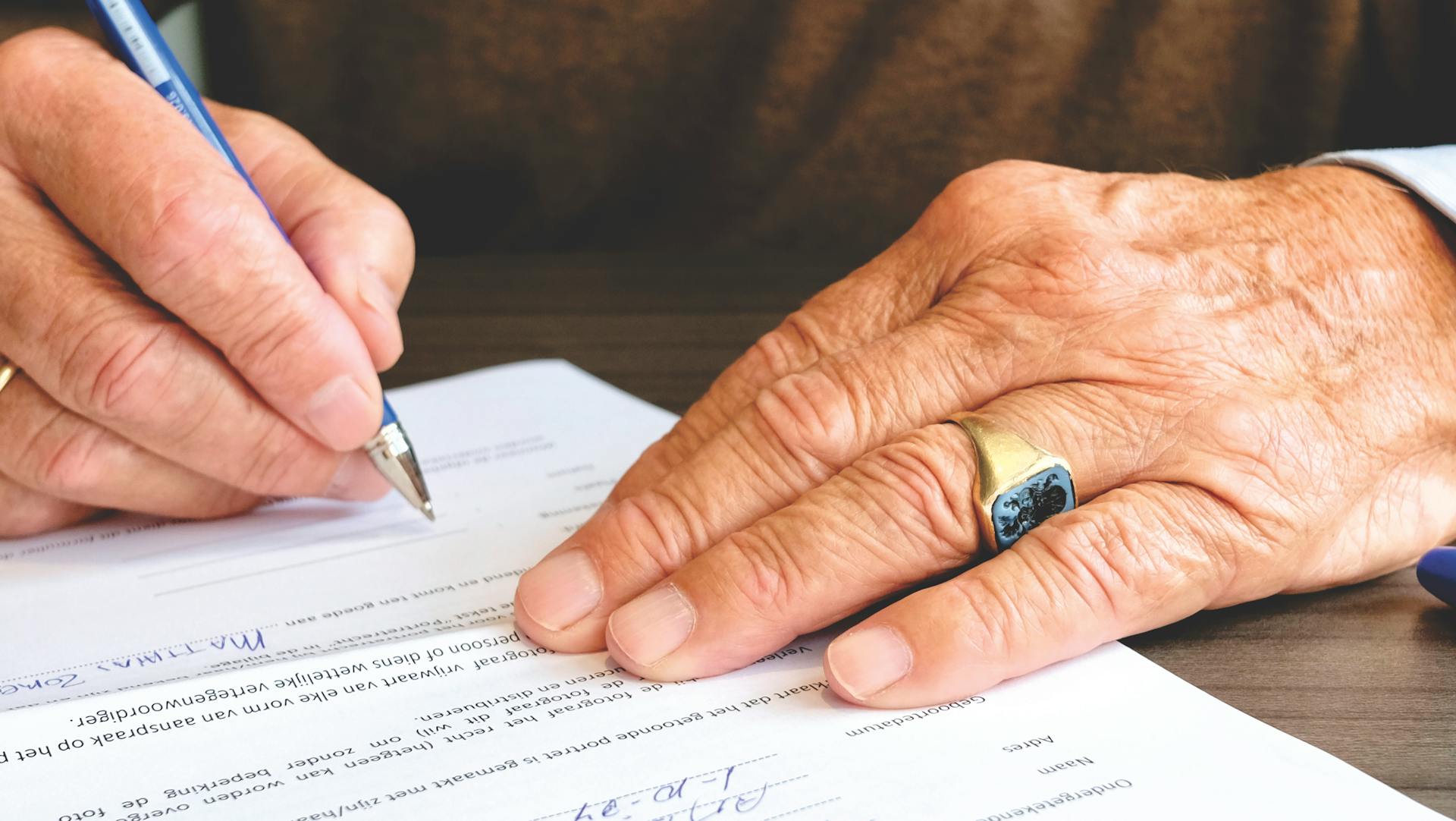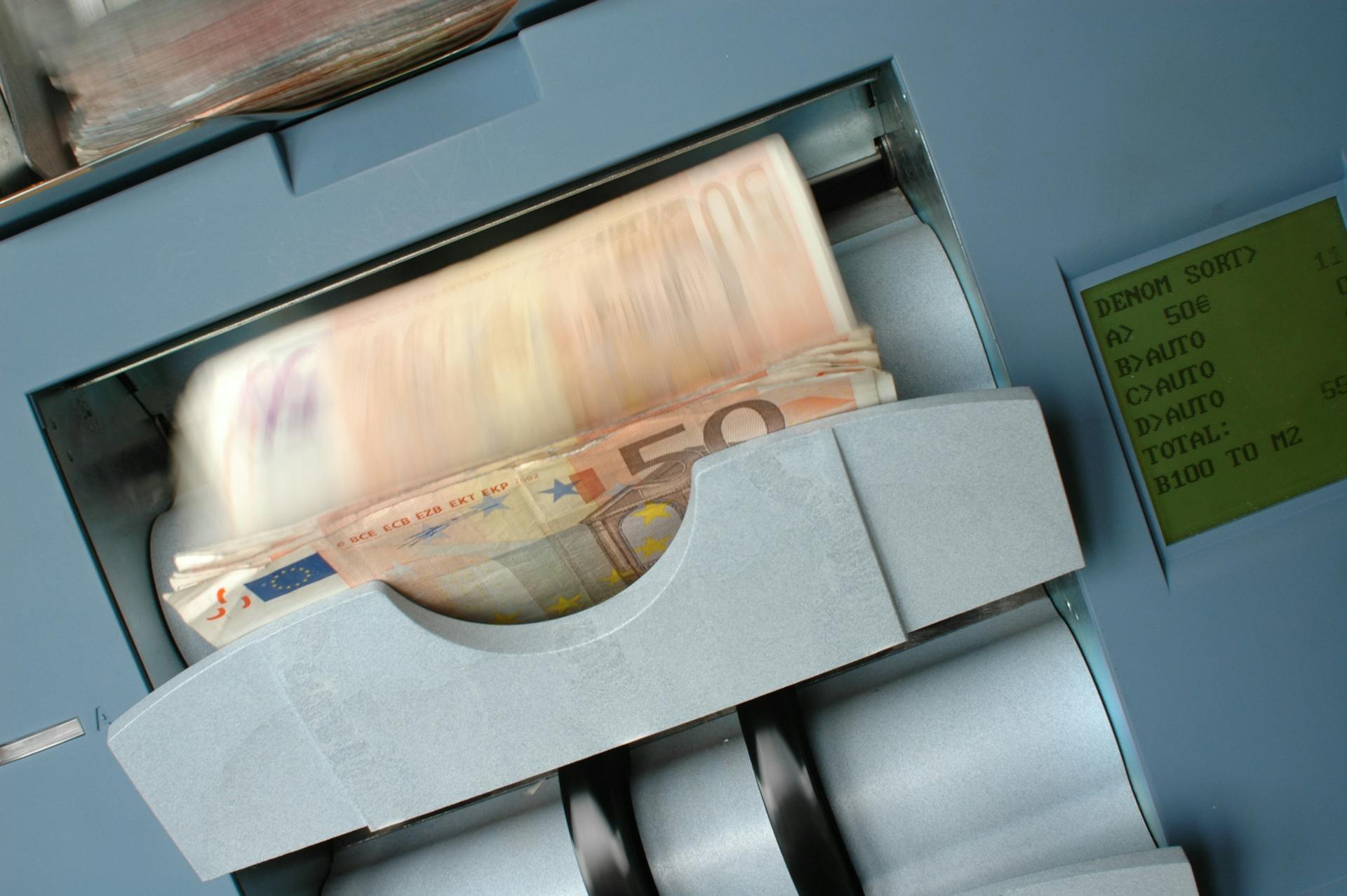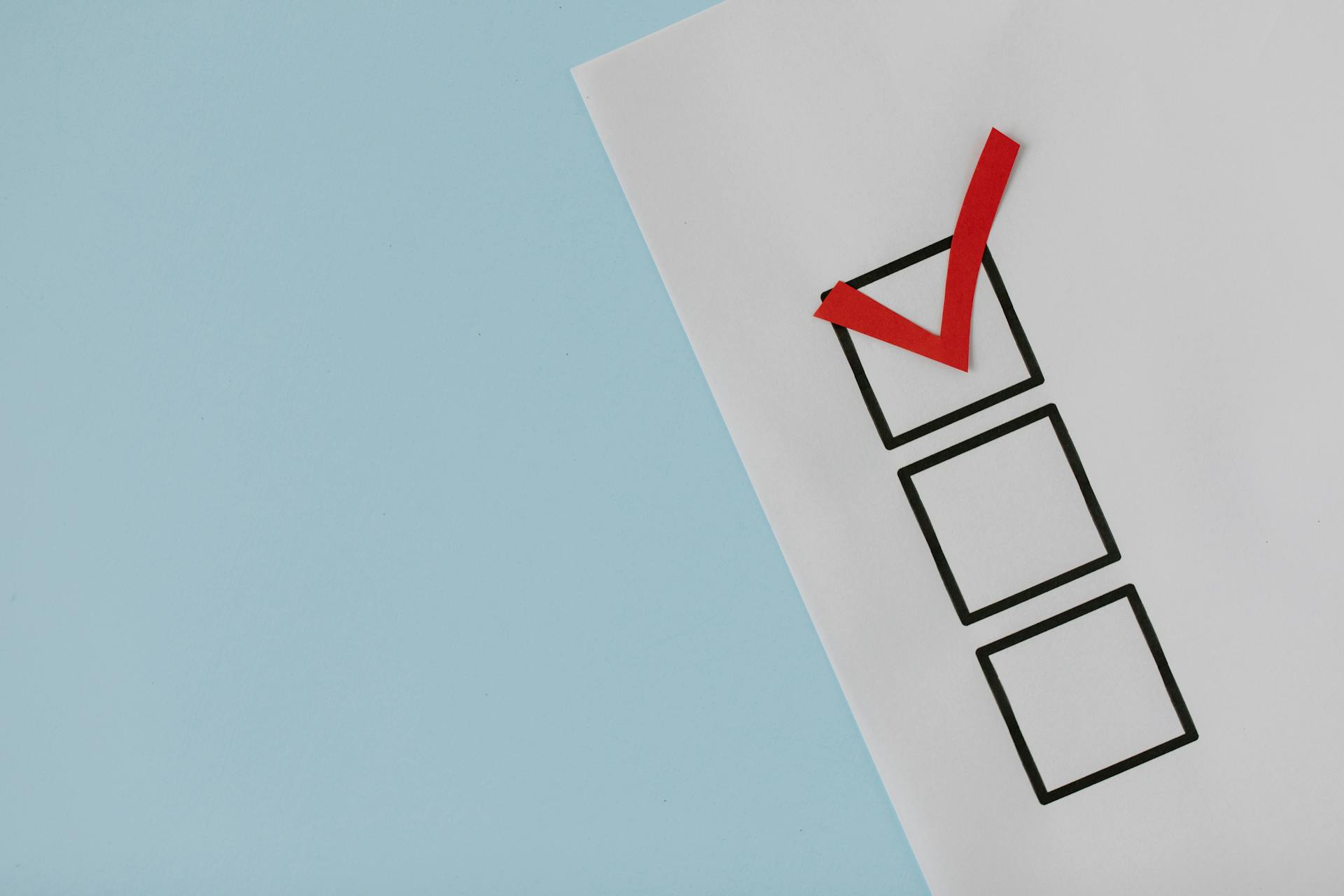
E check scams are a growing concern, and it's essential to understand how they work and how to prevent them. Scammers often use fake email or text messages to trick victims into revealing their bank account information.
Be cautious of unsolicited emails or messages asking you to verify your account information. In fact, most banks and financial institutions will never ask you to provide sensitive information via email or text.
To protect yourself, never give out your bank account information to someone you don't know, even if they claim to be from your bank. This is a crucial step in preventing e check scams.
E check scams often involve scammers creating fake checks that appear legitimate, but are actually worthless. These fake checks can be used to trick victims into depositing them into their accounts, which then gets drained by the scammer.
Consider reading: Do Credit History Check on Opening the Checking Account
Identifying and Avoiding Scams
If you receive a check for more than the selling price, it's likely a scam. Don't accept it.
Be cautious of accepting checks from people you don't know. If the check is a scam, it may be difficult to pursue a remedy. Verify that the check written is genuine by calling or visiting the branch of the financial institution on which the check is drawn on.
Some common scams involve work-at-home jobs, mystery shopper opportunities, and foreign lottery winnings. In these scams, you'll often be asked to deposit a check and then forward the money to someone else or pay fees. Don't fall for these tactics.
Here are some red flags to watch out for:
- Offers that ask you to pay for a prize
- Requests to buy gift cards or cryptocurrency
- Demands to wire money to someone
- Checks for more than the selling price
Why Scams Work
Scams work because fake checks often look just like real checks, even to bank employees. They can be printed with the names and addresses of legitimate financial institutions.
These fake checks may even be real checks written on bank accounts that belong to someone whose identity has been stolen.
Avoiding Scams
When dealing with checks, be cautious about accepting them from people you don't know, as this can be a scam.
Never use money from a check to send gift cards, money orders, cryptocurrency, or to wire money to anyone who asks you to. Many scammers demand that you buy gift cards and send them the PIN numbers, buy cryptocurrency and transfer it to them, or send money through wire transfer services like Western Union or MoneyGram.
Toss offers that ask you to pay for a prize, as it's almost impossible to get your money back if it's a scam. If it's free, you shouldn't have to pay to get it.
Don't accept a check for more than the selling price, as it's likely a scam.
Here are some common signs of a cashier's check scam:
- You receive payments via a cashier's check and are asked to deposit the payments to your account and forward the money to somebody else.
- You are informed that you have been chosen to act as a mystery shopper and receive a cashier's check to deposit and use for purchases.
- The cashier's check is used to purchase goods or services, but it turns out to be fraudulent.
- You have won a foreign lottery or inherited money, and the scammer sends you a cashier's check to help cover taxes and fees.
To avoid falling victim to a cashier's check scam, verify that the check is genuine by calling the financial institution on which the check is drawn. Don't trust the phone number listed on the check, and do your research to find the real phone number.
Expand your knowledge: I M E I Number Check
Save all documents associated with a cashier's check, as this paperwork may be helpful if something goes awry.
Be aware of common types of fake checks scams, such as:
- Mystery shopping scams
- Personal assistant scams
- Car wrap decals scams
- Claiming prizes scams
- Overpayments scams
Don't rely on money from a check unless you know and trust the person you're dealing with.
Protecting Yourself
Be cautious of unsolicited emails or messages asking for your bank account information or login credentials. This is a common tactic used by scammers to steal your identity and money.
Use strong, unique passwords for all your online accounts, especially your bank and email accounts. This will help prevent scammers from accessing your accounts even if they manage to obtain your login credentials.
Keep your computer and phone software up to date to ensure you have the latest security patches and updates. This will help protect you from malware and other types of cyber threats.
Protect Yourself with FDIC Tips
Banks are not responsible for money taken from accounts during e-check fraud, as there is no way they can know the transaction is fraudulent.
You can protect yourself by understanding that your company has the ultimate responsibility for verifying e-check transactions, especially when the options for verification are limited.
A low-end verification process verifies only that a routing number is valid before processing the transaction, which is not enough to prevent fraud.
To safeguard your accounts, you should implement protective measures on your end, such as verifying the routing number, account number, and name on the account.
The highest level of verification requires actual confirmation of ownership for both accounts, but this level of security causes significant processing issues for most merchants.
You can also take steps to prevent flagging legitimate purchases, such as individuals or organizations processing many transactions in a short amount of time, or recurring payments using multiple accounts.
Implementing a high level of protection is not always feasible, but you can still take precautions to minimize the risk of e-check fraud.
Related reading: What Is a Checking Account
Testing RSM Account Withdrawal
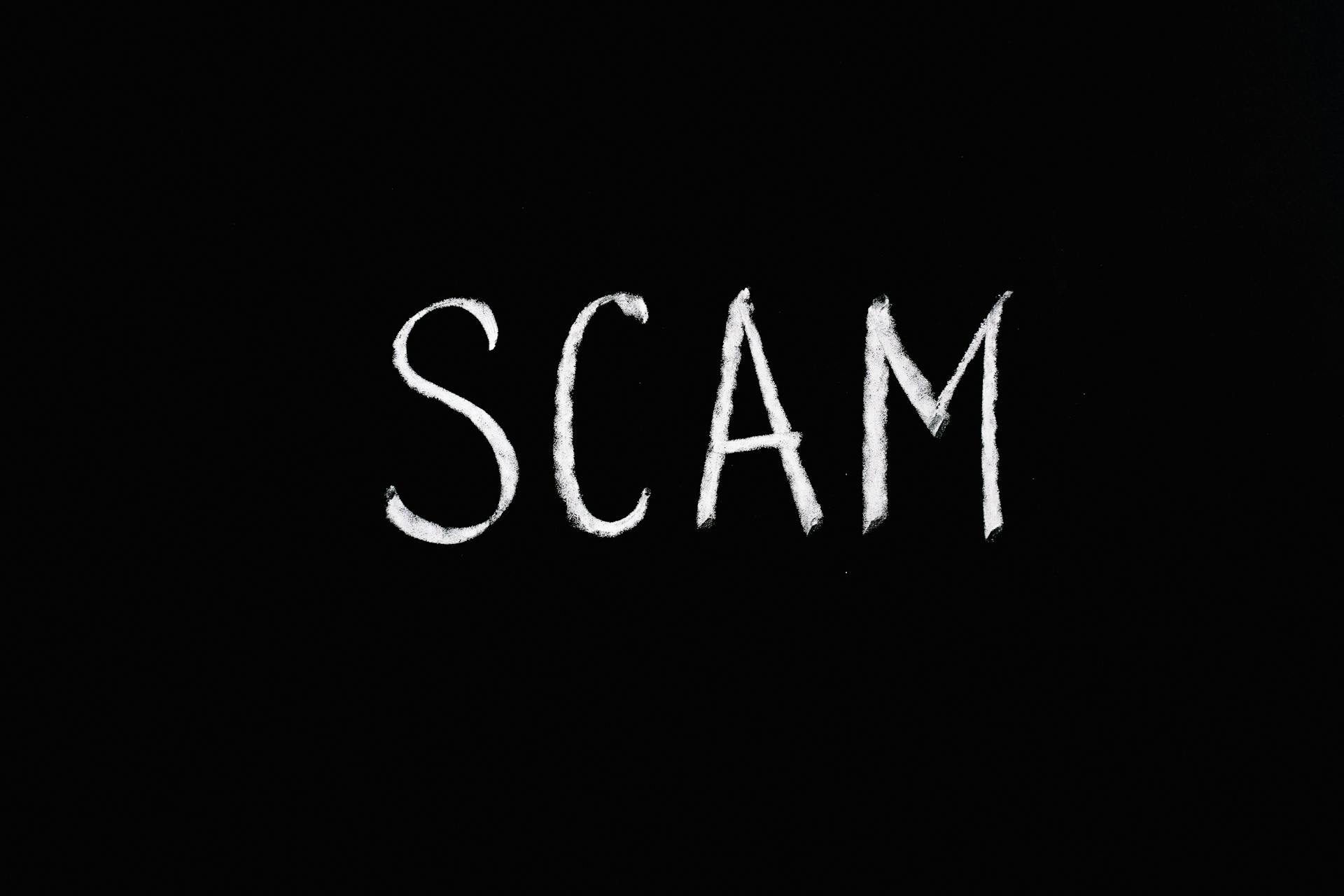
Testing RSM account withdrawal can be a challenge. We put mitigation techniques to the test by attempting to withdraw small amounts of money from several of RSM's accounts.
The transactions appeared to go through because the banks had no initial way to verify their authenticity. However, within 24 hours, each of the three transactions had been declined by our external banks.
We use Positive Pay and ACH blocking to protect our accounts from unauthorized transactions. This measure helped prevent the RSM account withdrawals from going through.
A "pending" status appeared in the external accounts after the transactions were initiated. But ultimately, the transactions were declined due to our security measures.
Additional reading: Free Online Banking No Deposit
Understanding Cashier's Checks
Cashier's checks are checks guaranteed by a financial institution, drawn from its own funds and signed by a cashier or teller. They're often used for large payments and are considered a safe way to make a purchase.
However, it's essential to note that a financial institution may issue a stop payment on a cashier's check under specific circumstances, such as if the check is lost or stolen.
On a similar theme: Is a Bank Check the Same as a Cashier's Check
Don't assume you have the funds until the cashier's check has cleared. If a cashier's check is not genuine, and you unknowingly accept it in exchange for goods or services, you'll likely be the one who suffers financial loss.
Cashier's checks are not the same as regular checks, as the bank guarantees its payment, not the purchaser. Be aware of this difference and take necessary precautions when dealing with cashier's checks.
Here are some common scenarios where cashier's checks are used to scam people:
Prevention and Risk
Midsize companies are particularly vulnerable to e-check fraud due to their growing bank activity, which can make it difficult to manually review transactions.
Large companies often have automatic reconciliation systems that can flag unusual transactions, while small organizations process fewer transactions, making it easier to spot irregularities.
To mitigate e-check fraud, it's essential to strengthen reconciliation practices and discuss controls with your financial institution. This can include leveraging external resources to improve processes and observe transaction activity.
By limiting deposits to certain accounts and locking them to prevent withdrawals, you can reduce your susceptibility to e-check fraud.
Fraud Prevention and Risk
E-check fraud is a growing concern, and it's essential to take proactive steps to protect your finances. With electronic banking's convenience comes increased risk, and organizations are seeing a significant rise in e-check fraud.
Organizations can take advantage of several strategies to protect finances and discourage e-check fraud. Strengthening reconciliation practices is a major line of defense against e-check fraud.
Strengthening reconciliation practices involves performing reconciliations in a timely and thorough manner to detect instances of fraud. This can be done by leveraging external resources to improve processes and observe transaction activity.
Reconciliation parameters should be adjusted to target suspicious transactions, both large and small. Many companies have suffered significant financial losses from a series of small fraudulent transactions that went undetected because they fell below the reconciliation threshold.
Limiting susceptibility to e-check fraud can be achieved by allowing deposits only into certain accounts and locking them so funds can only go in. This can be done by creating separate accounts for payroll, accounts payable, and operations.
Positive Pay or similar solutions can limit allowed transactions by your financial institution. Using this method, transferring only the payroll amount into a separate account in advance of payday limits liability if someone tried to use the routing and account number from a payroll check in e-fraud.
Risk Groups
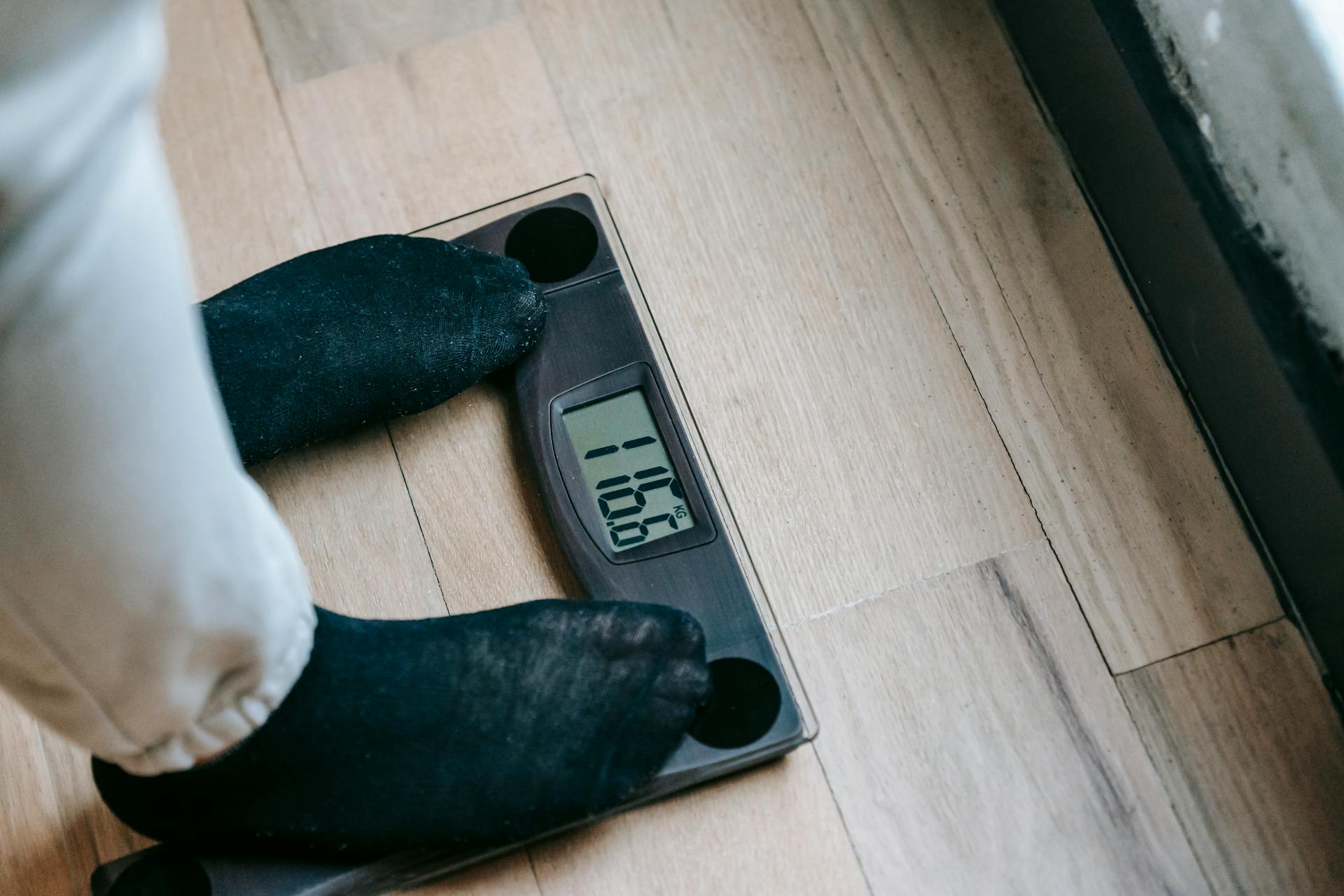
Midsize companies are often at the greatest risk of e-check fraud. Their transaction volume is too high to process line-by-line, but too low to implement automatic reconciliation systems.
Large companies typically have automatic reconciliation systems in place, making it easier to identify and flag unusual transactions. This is because they process a high volume of transactions, making it more feasible to invest in such systems.
Small organizations, on the other hand, process fewer transactions, making it easier to spot irregular transactions and missing funds. As a result, they often have fewer problems with e-check fraud.
Frequently Asked Questions
How can you tell if an eCheck is real?
Verify the bank's address on the eCheck by checking the bank's website or calling them, and ensure it's accurate and not just a PO Box
What happens if you deposit a fake e-check?
Depositing a fake e-check can result in a reversed deposit, leaving you responsible for any withdrawn or transferred funds. You may also lose money sent to the scammer, making it unlikely to be recovered
What is the problem with eChecks?
eChecks can fail due to insufficient funds or incorrect bank account information, causing payment delays or rejections
Why would a scammer want to send me a check?
A scammer's goal is to trick you into cashing a fake check and sending them money, not to help you. They want to get you to pay the bank back for the fake check, while keeping the money you sent them.
What is digital check fraud?
Digital check fraud is an attempt to use fake digital checks to obtain money, often targeting business accounts. It's a significant area of concern for banks and customers, with millions of dollars lost each year.
Sources
- https://www.fincen.gov/resources/advisoriesbulletinsfact-sheets
- https://consumer.ftc.gov/articles/how-spot-avoid-report-fake-check-scams
- https://dfi.wa.gov/financial-education/information/cashiers-check-scams
- https://www.fdic.gov/consumers/consumer/news/august2019.html
- https://rsmus.com/insights/industries/financial-institutions/e-check-fraud-mitigating-risks-to-protect-your-organization.html
Featured Images: pexels.com

